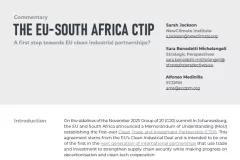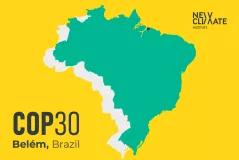Amid rising geopolitical uncertainty and intensifying trade tensions, Southeast Asia’s energy landscape is undergoing a profound transformation. Driven by rapid population growth, urbanisation, industrialisation and the rise of artificial intelligence, the region is expected to see a surge in energy demand, making it one of the fastest-growing energy markets globally.
Meeting this soaring demand while cutting emissions, strengthening energy security and delivering affordable energy has become an urgent priority. In response, policymakers are considering a range of low-carbon technology options, including hydrogen, battery storage and small modular reactors (SMRs) alongside renewable energy sources.
But not all technologies are equally suited to Southeast Asia’s unique context. Which technologies are viable, cost-effective and scalable? And where should governments guide investments, given limited resources and other pressing priorities?
To help answer these questions, the project Clean, Affordable and Secure Energy for Southeast Asia (CASE) has launched the technology brief series. The first edition unpacks the role of renewable hydrogen in the power sector. The second and third editions will provide insights into SMRs and virtual power plants (VPPs), respectively. Developed by Agora Energiewende and NewClimate Institute in collaboration with think tanks in the region, the series offers practical guidance for policymakers navigating complex decisions for their energy futures.
This Q&A explains what this series is about, why it focuses on hydrogen, SMRs, and VPPs, and how these technologies could shape Southeast Asia’s energy transition.
Q1. What has motivated you to present this series?
Southeast Asia’s rapidly growing energy demand presents both challenges and opportunities for the energy transition. Against the backdrop of vast investment needs over the coming decade and beyond, policymakers in the region have an opportunity to set a course for a successful and sustainable energy transition, in line with broader government priorities.
In this highly dynamic ecosystem, diverse stakeholders promote different technologies, each shaped by varying perspectives and priorities. To ensure optimal outcomes, it is important to carefully assess available information so that technology choices support cost-effective, secure and environmentally responsible energy pathways.
Q2. What is the technologies brief series about? Who is it for, and what does it aim to do?
This series on emerging technologies provides evidence-based recommendations on which technologies to prioritise in the power sector and where a more cautious approach is warranted. It aims to support policymakers and other decision-makers in the energy sector in Southeast Asia in navigating sometimes complex technology choices.
Q3. What technologies are covered, and why are they relevant to Southeast Asia?
The series focuses on the role of hydrogen and small modular reactors in the power sector, as well as the potential of virtual power plants. Hydrogen and its derivatives are included in many Southeast Asian power sector plans as a means of reducing emissions while using existing infrastructure. Small modular reactors, in particular, are gaining attention due to their promise of providing large amounts of electricity. However, due to high costs, these technologies have seen only limited deployment and currently play no role in electricity generation in Southeast Asia. Renewable energy, driven by solar power, has already expanded rapidly in some countries, with others poised to follow a similar trajectory over the coming years. In this context, virtual power plants offer growing potential as a source of system flexibility, reducing the need for peaking plants and infrastructure upgrades.
Q4. How can national policymakers build on the insights provided in the briefs?
The briefs explore the potential of each featured technology and assess the key trade-offs involved in supporting their deployment. While tailored for Southeast Asia, the findings are equally relevant to other emerging economies facing similar energy challenges. The briefs highlight emerging risks and opportunities associated with hydrogen and SMRs, as well as the potential role of VPPs and the key criteria for their effective integration. Comprehensive in scope yet succinctly elaborated, the insights consider both technology-level and system-level factors, helping decision-makers chart cost-effective and resilient energy pathways for the future.
About NewClimate Institute
NewClimate Institute is an independent non-profit organisation that develops solutions to tackle climate change and drives their implementation worldwide. Through research, policy advice and knowledge sharing, we aim to raise the ambition for climate action and support sustainable development.
About Agora Energiewende
Agora Energiewende develops scientifically sound and politically feasible concepts for a successful pathway to climate neutrality – in Germany, Europe and internationally. The organisation which is part of the Agora Think Tanks works independently of economic and partisan interests. Its only commitment is to climate action.







